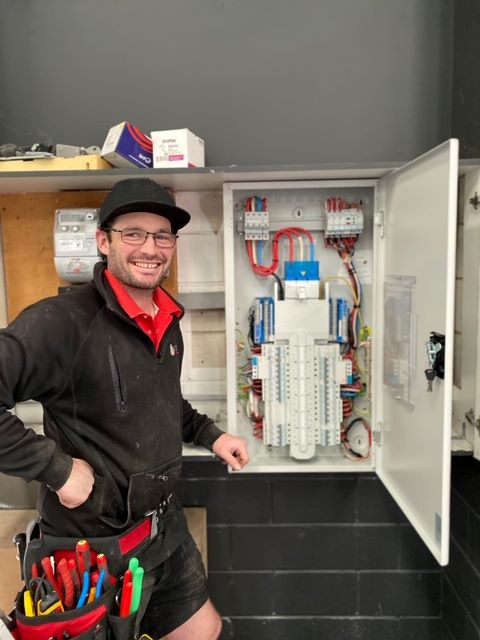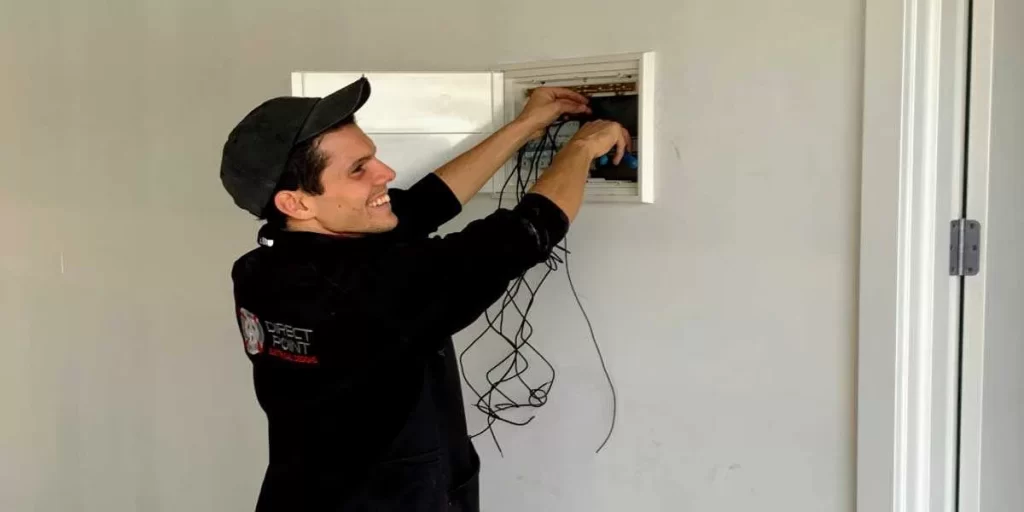When exploring electrical installations for your home or business, a common inquiry revolves around whether a main breaker is essential in a sub panel. This question frequently emerges as property owners assess their options for upgrading electrical systems or adding new circuits to accommodate growing power demands. It is crucial to grasp the functions and requirements of sub panels to ensure a safe, efficient, and reliable electrical setup that meets all your energy needs.
In most scenarios, a sub panel does not necessitate a main breaker, as it draws power from the main panel, which is already equipped with a main breaker that regulates the total power distribution. The breaker in the main panel acts as the primary disconnect for the entire electrical system, inclusive of all sub panels. However, particular local electrical codes or unique installation circumstances may require a main breaker in sub panels, especially for added safety or operational ease. It is vital to consult local regulations to guarantee compliance and safety in your electrical installations.
While not a standard necessity, incorporating a main breaker into your sub panel can yield numerous advantages. It enables a quick and straightforward method to disconnect power to all circuits within that specific panel without disrupting the entire electrical system. This feature is particularly beneficial during maintenance activities or emergencies, as it allows for the safe isolation of different sections of your property’s electrical network, significantly enhancing safety and accessibility during critical situations.

Explore the Essential Functions and Advantages of Sub Panels for Your Electrical System
Sub panels are integral components in electrical systems, facilitating efficient power distribution to specific areas or appliances within a property. They significantly improve control and organization of circuits while increasing the overall capacity to manage electrical loads effectively. By strategically positioning sub panels, property owners can optimize their electrical infrastructure to adeptly meet the diverse demands of various appliances and equipment, ensuring that your property operates smoothly and efficiently.
Gain Insight into Sub Panels: Their Vital Role and Unique Benefits
A sub panel, often referred to as a subsidiary panel or distribution board, serves as an auxiliary electrical panel that branches off from the main electrical panel. Its primary function is to act as a secondary distribution point for electricity throughout a building, providing flexibility and improved efficiency. Sub panels are typically installed to:
- Enhance circuit capacity for a variety of applications and equipment.
- Isolate power supply to specific areas or devices, promoting safety and convenience.
- Facilitate better organization and management of the overall electrical system.
Common installation locations for sub panels include garages, workshops, or larger homes where the main panel may be positioned far from certain areas that require power. By adding sub panels, property owners can achieve more efficient power distribution, simplifying circuit management and making it easier to access and control their electrical infrastructure as needed.
Crucial Considerations for Thorough Electrical Load Assessment Prior to Sub Panel Installation
Before moving forward with a sub panel installation, it is imperative to conduct a comprehensive evaluation of the electrical load requirements. Key factors to consider include:
- The total amperage necessary for the designated area or equipment.
- The number and types of circuits that will be required for specific applications.
- The distance from the main panel to the selected sub panel location.
Calculating the anticipated load is vital to ensure that the sub panel can safely accommodate it. Typically, sub panels are available in capacities ranging from 60 to 200 amps, contingent upon their intended use. Matching the sub panel's capacity to your specific electrical needs is essential for both efficiency and safety. Additionally, taking potential future expansions into account when sizing your sub panel can save time and costs, thereby preventing the need for upgrades or replacements as your electrical demands evolve.

Essential Factors for Safe and Effective Sub Panel Installation
To ensure a safe and efficient installation of a sub panel, several critical factors must be addressed, including circuit breakers, adherence to regulatory standards, and implementing necessary safety measures. Understanding these installation requirements is imperative for establishing a safe and compliant electrical system that functions effectively.
Evaluating the Requirement for Circuit Breakers in Sub Panels
While sub panels do not always necessitate a main breaker, the requirement may vary based on specific situations, such as:
- The distance from the main panel: A local disconnect may be vital if the sub panel is positioned far from the main panel.
- The number of circuits: Sub panels with more than six breakers typically require a main breaker to enhance safety.
- Local codes: Certain jurisdictions mandate the installation of main breakers in all sub panels.
A main lug sub panel relies on the main breaker from the main panel for overcurrent protection, which is a common configuration when the sub panel is located near the main electrical panel. Being informed about the specific needs of your installation is crucial for ensuring compliance and safety.
Understanding Regulatory Standards Governing Sub Panel Installations
In Australia, specific electrical standards regulate the installation of sub panels, including:
- AS/NZS 3000: This standard outlines the comprehensive requirements for all electrical installations.
- Maximum rating: Main breakers for sub panels must not exceed the ampacity of the feeder conductors to guarantee safe operation.
- Labelling: Clear identification of the power source for the sub panel is a mandatory requirement.
Adhering to these standards is essential for ensuring safety and lawful operation. It is highly advisable to consult local authorities for specific regional requirements, and remember that all electrical work must be conducted by a licensed electrician to ensure compliance and safety!

Implementing Key Safety Measures During Sub Panel Installations
Implementing strong safety measures during sub panel installations is crucial for minimizing electrical risks and ensuring operational safety:
- Proper grounding: Ensure that the sub panel is effectively grounded to mitigate the risk of electrical shocks.
- Adequate spacing: Maintain sufficient clearance around the panel to facilitate easy access and adequate ventilation.
- Weatherproofing: For installations situated outdoors, utilize weather-resistant enclosures to safeguard against moisture and environmental factors.
Furthermore, it is vital to utilize the correct wire sizes and types tailored to the expected load. Installing arc fault circuit interrupters (AFCIs) and ground fault circuit interrupters (GFCIs) in accordance with code requirements is also essential for safety. Regular inspections and maintenance of the electrical installation significantly contribute to ongoing safety and compliance. Always engage a licensed electrician for sub panel installations to ensure that all safety standards are rigorously followed.
Addressing Common Questions About Sub Panels and Main Breakers
The intricacies surrounding sub panels, including considerations about breakers, sizing, and regulations, can be daunting for property owners. Acquiring a clear understanding of the essential requirements is vital for ensuring a safe and compliant electrical setup that meets all local codes and safety standards.
Is a Main Breaker Mandatory for a Sub Panel?
A sub panel does not inherently require a main breaker. The necessity primarily hinges on its location relative to the main panel and local electrical codes. If the sub panel is located within the same structure as the main panel, a main breaker is usually unnecessary.
However, if the sub panel is situated in a separate building, it typically must incorporate a main breaker for safety and compliance reasons, ensuring that all electrical installations adhere to local regulations.
Can a Main Breaker Panel Operate as a Sub Panel?
Yes, a main breaker panel can indeed serve as a sub panel, although it may not always be the most efficient option. In this arrangement, the main breaker would act as an additional disconnect point rather than the primary disconnect for the electrical system.
Choosing a panel specifically designed as a sub panel is often more cost-effective and space-efficient, offering superior functionality tailored to your electrical needs.
What Size Breaker is Appropriate for a 100 Ampere Sub Panel?
For a 100 ampere sub panel, it is standard practice to utilize a 100 ampere breaker in the main panel to supply it. This breaker should correspond with the sub panel's rating to ensure optimal protection and functionality, delivering a reliable power supply.
Additionally, the wire size must also be adequate for handling a 100 ampere load, ensuring that the entire electrical system operates safely and efficiently.
Which Regulations Oversee Electrical Sub Panels?
Electrical sub panel regulations can vary by region, but they primarily focus on safety and accessibility. Key regulations typically encompass:
- Proper grounding and bonding procedures to enhance safety.
- Correct wire sizing to effectively accommodate anticipated loads.
- Adequate spacing around the panel to ensure accessibility and safety.
- Clear labelling of all circuits within the panel for better management.
Always refer to local codes and consider professional installation to ensure full compliance with all regulations, creating a secure electrical environment.
What is the Capacity Limit for a Sub Panel Connected to a 200 Ampere Main Panel?
A sub panel connected to a 200 ampere main panel does not have a predetermined capacity limit. The size of the sub panel is contingent upon several factors, including:
- The available capacity in the main panel to support additional loads.
- The intended load requirements for the sub panel based on its specific usage.
- The wire size utilized between the panels, ensuring it can safely handle the load.
It is possible to install a 100 or 150 ampere sub panel, provided that the main panel has adequate spare capacity to support it, allowing for flexibility to accommodate future needs.
How to Accurately Size a Breaker for a New Sub Panel Installation?
To effectively size a breaker for a new sub panel, follow these steps:
- Calculate the total load that the sub panel is expected to support, taking into account all connected devices.
- Select a panel that is rated for that load or higher to ensure safety and efficiency.
- Choose a breaker in the main panel that aligns with the sub panel’s rating for optimal performance.
It is advisable to consider potential future expansion needs when sizing the panel. Often, installing a slightly larger panel than currently required can provide additional flexibility for accommodating future electrical demands, making your system more adaptable and capable of handling increased loads.
The Article: Does a Main Breaker Need to Be in a Sub Panel? first appeared on https://writebuff.com
The Article Main Breaker Requirements for Sub Panels Explained Was Found On https://limitsofstrategy.com


Your exploration of the necessity of a main breaker in sub panels raises an important point that many homeowners may overlook when upgrading their electrical systems. I’ve seen firsthand the confusion this topic can cause, particularly when clients are eager to enhance their energy capacity while staying compliant with local safety regulations.
This is a compelling examination of the role of main breakers in sub panels and raises important considerations for anyone considering electrical upgrades in their homes or businesses. I’ve often found that while the technical aspects are crucial, the broader implications of our electrical choices are equally significant.